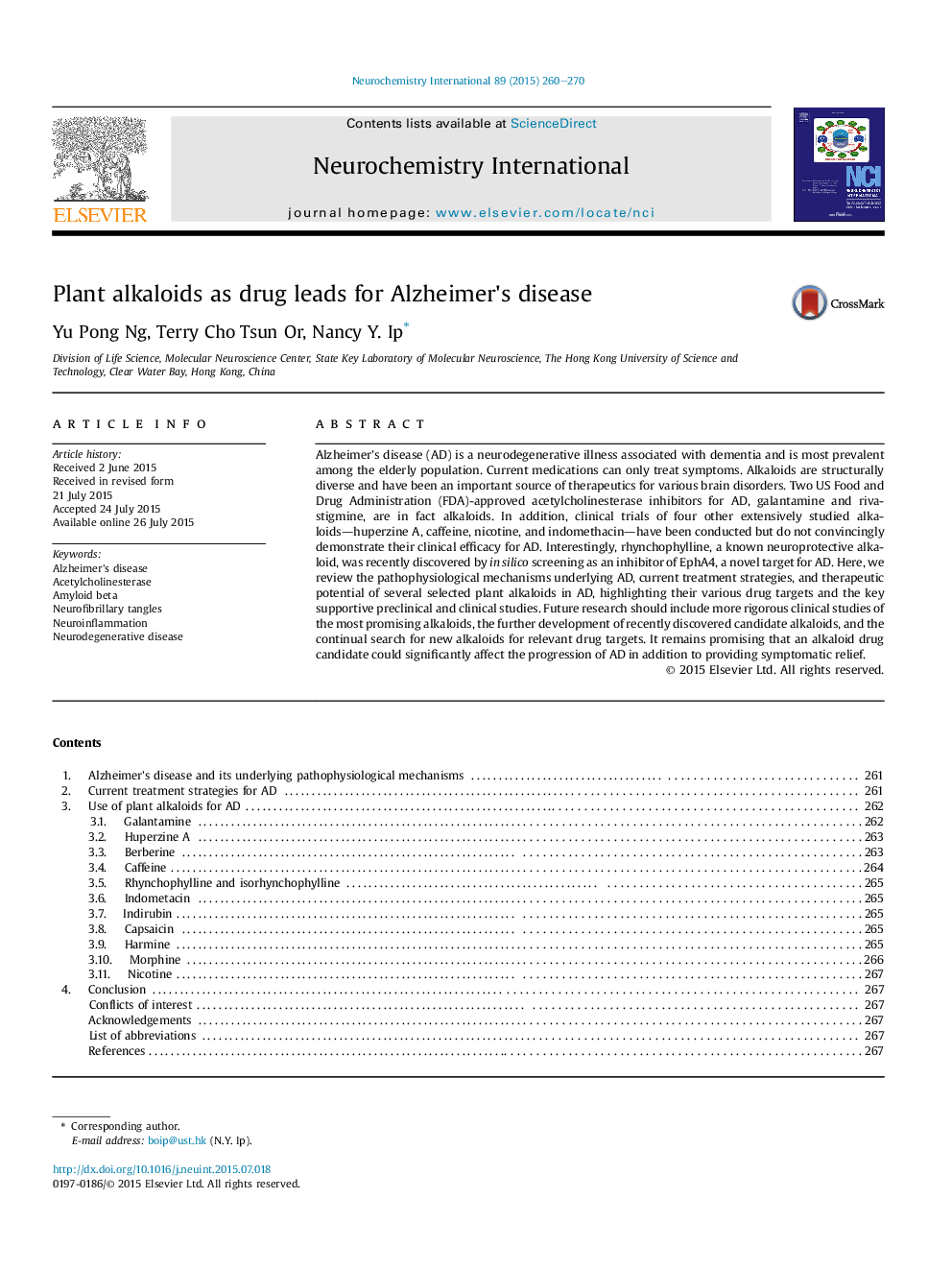| Article ID | Journal | Published Year | Pages | File Type |
|---|---|---|---|---|
| 2200403 | Neurochemistry International | 2015 | 11 Pages |
•Pathophysiological mechanisms of Alzheimer's disease.•Current treatment strategies for Alzheimer's disease.•Therapeutic potentials of some plant alkaloids in Alzheimer's disease, covering conventional to novel drug targets.
Alzheimer's disease (AD) is a neurodegenerative illness associated with dementia and is most prevalent among the elderly population. Current medications can only treat symptoms. Alkaloids are structurally diverse and have been an important source of therapeutics for various brain disorders. Two US Food and Drug Administration (FDA)-approved acetylcholinesterase inhibitors for AD, galantamine and rivastigmine, are in fact alkaloids. In addition, clinical trials of four other extensively studied alkaloids—huperzine A, caffeine, nicotine, and indomethacin—have been conducted but do not convincingly demonstrate their clinical efficacy for AD. Interestingly, rhynchophylline, a known neuroprotective alkaloid, was recently discovered by in silico screening as an inhibitor of EphA4, a novel target for AD. Here, we review the pathophysiological mechanisms underlying AD, current treatment strategies, and therapeutic potential of several selected plant alkaloids in AD, highlighting their various drug targets and the key supportive preclinical and clinical studies. Future research should include more rigorous clinical studies of the most promising alkaloids, the further development of recently discovered candidate alkaloids, and the continual search for new alkaloids for relevant drug targets. It remains promising that an alkaloid drug candidate could significantly affect the progression of AD in addition to providing symptomatic relief.
